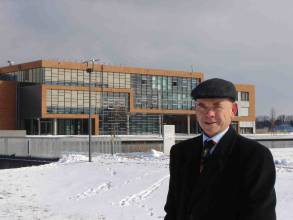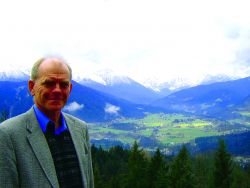Our hosts at Infineon Technologies AG today kept wanting to apologize for the snow, but Richard Fischer and I assured them that Oregon and New Jersey were no strangers to the stuff. Especially Richard, coming off this year’s season of perpetual storms on the East Coast.
Our hosts at Infineon Technologies AG today kept wanting to apologize for the snow, but Richard Fischer and I assured them that Oregon and New Jersey were no strangers to the stuff. Especially Richard, coming off this year’s season of perpetual storms on the East Coast.
Nonetheless, as we walked the 250 meters from the S-Bahn station to Infineon’s five-year-old campus in Neubiberg (accompanying photo), I was happy for the ear flaps that designers had added to my Breiter wool cap purchased during last year’s Summit. (And despite the “dork factor” that led Richard to insist that I tuck them out of sight for the photo.)
More will be said at the appropriate moment about the business (rather than meteorological) side of this company visit, but one quick takeaway.
For wireless solution providers like Infineon selling to consumer device manufacturers, we’ve heard for years that a key design question for adding GNSSes in addition to GPS (which most of them already offer on their multi-technology products) is, when will enough satellites and signals be available to make a difference?
But a second, and probably a more essential question in the long run: will this add to my DSP expense (e.g., memory, processing as with Galileo signals) or hardware expense (e.g., front-end costs for adding GLONASS FDMA signals) or, preferably, neither?
(My wife and partner said readers may want to know where to buy the hat: Breiter: Dachauer Straße 14, 80335 München, Germany Tel: 89-5998840 Email: in**@*********er.de)
Inside GNSS editor Glen Gibbons is blogging from the Munich Satellite Navigation Summit 2010.






